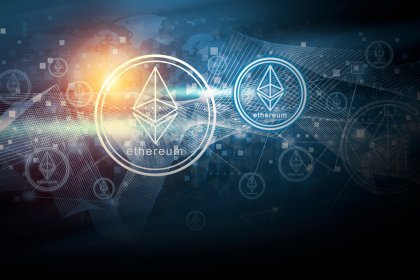Seeking to address the big issue of network scalability that largely postpones the mainstream adoption of cryptocurrency payment system, the creator of Ethereum introduces newly developed Sharding and Plasma solutions.
From the very beginning, two major blockchain networks of Bitcoin and Ethereum have been facing the limited processing speed required for nodes to validate transactions executed on the networks. Considering the continuously growing community of cryptocurrency holders, the low transaction rate as well as increased operational costs have become a significant obstacle for the everyday usage of digital assets.
The current speed of Bitcoin transactions is only 7 transactions per second, while Ethereum can process up to 15 transactions at peak capacity. However, even when Ethereum is able to execute twice the amount of Bitcoin transactions, it is still not good enough in order to shatter the highly set benchmark of the cost of transactions available on blockchain.
In an effort to overcome issues with network congestion and overall throughput, the founder of Ethereum has announced two layer improvements, Sharding and Plasma, conceived to boost the network’s transaction capacity. Buterin claims it is only a matter of time until these primary solutions working in tandem will enable the Ethereum network to process upwards of a million transactions per second.
Sharding represents a scaling solution that splits blockchain networks into smaller partitions called shards, which contain independent transaction history. In this scenario, individual nodes would only have to process transactions for certain shards, hence allowing the overall transactional throughput to be greater as a single node wouldn’t have to do all the work.
Plasma, on the other hand, is designated to be a solution for conducting off-chain transactions that does not improve the blockchain itself, instead it takes an existing blockchain and creates a special construction, which is connected to it, and thus provides a much higher throughput. Nevertheless, as it relies on the underlying blockchain of Ethereum, Plasma allows the Ethereum blockchain to continue handling smart contracts and guarantee an advanced layer of security while only broadcasting completed transactions.
Speaking of the technology, Buterin explained how the two solutions work in complement:
“If you have a Sharding solution, the Sharding solution itself might increase the scalability of Ethereum by a factor of 100, or eventually even more. But then, if you do Plasma on top of the scalability solution, then what that means is, you’re not just doing 100 times of the amount of activity but you are doing 100 times the amount of entrances, the amount of exits, and despite resolutions.”
According to the recent OmiseGO AMA session hosting Buterin, Sharding and Plasma had already been tested on the Ethereum testnet to support potential decentralized applications (dApps) with millions of users by taking an innovative approach in optimizing the blockchain.
It is worth to mention that the other day one of the best business conferences, Nordic Business Forum, has nominated Buterin amidst the 25 most promising, successful, and deservedly enviable entrepreneurs under the age of 25 in Northern Europe. The selection criteria adjusts this nomination to a dedicated group of people who is stepping up to challenge the odds and create new solutions that improve lives and create positive change.
The news especially flatters the supporters of Ethereum who now obtained an addition reason to be proud of. However, at the moment Buterin has made no comments on his nomination.
next